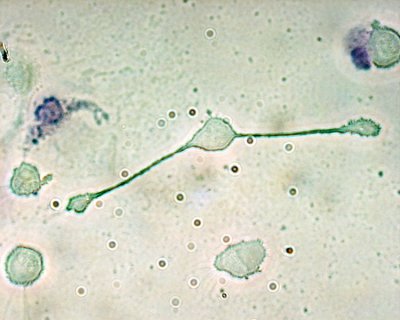macrophage

A macrophage of a mouse forming two processes to phagocytize two smaller particles, possibly pathogens.
A macrophage is a type of large leukocyte (white blood cell) that uses a process called phagocytosis to engulf bacteria and digest cellular debris. Macrophages develop from monocytes and, during inflammation, are able to produce inflammatory molecules.
Macrophages are found mainly in the liver, spleen, and lymph nodes. Working together with other lymphocytes, they form part of the body's immune system. They are part of the innate immune system, which means that they are the first line of defense against invading pathogens. Macrophages are also involved in tissue repair and the maintenance of homeostasis in the body.
Macrophages are derived from monocytes, which are a type of white blood cell that circulate in the bloodstream. When a pathogen enters the body, monocytes migrate to the site of infection and differentiate into macrophages. Macrophages are able to recognize and engulf pathogens through phagocytosis. Once inside the macrophage, the pathogen is broken down and destroyed by enzymes and other molecules.
In addition to their role in phagocytosis, macrophages are also involved in cytokine production. Cytokines are signaling molecules that help to coordinate the immune response. Macrophages produce cytokines in response to infection or injury, which helps to recruit other immune cells to the site of infection. They also play a role in antigen presentation, which is the process by which the immune system is able to recognize and remember specific pathogens.
Macrophages are not only important for fighting infections, but also for maintaining tissue homeostasis. They are involved in tissue repair and regeneration, and play a role in the resolution of inflammation. In addition, macrophages are involved in the removal of cellular debris and dead cells, which helps to prevent the development of autoimmune diseases.
There are several different types of macrophages, each with their own distinct functions. For example, alveolar macrophages are found in the lungs and are involved in the clearance of particles and pathogens from the airways. Kupffer cells are found in the liver and are involved in the clearance of bacteria and other toxins from the blood. Microglia are found in the brain and play a role in the immune response to infections and injury.


